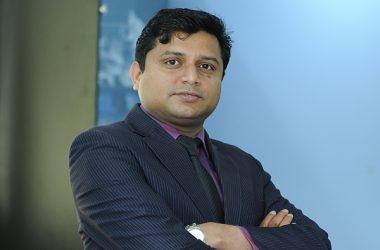 The application of IT is not only transforming the way students learn, but also the way they are being taught. Pallavi Sharma studies how educational institutions in the region are leveraging technology.
The application of IT is not only transforming the way students learn, but also the way they are being taught. Pallavi Sharma studies how educational institutions in the region are leveraging technology.
The Internet and globalisation have together created an economy that is powered by technology, fuelled by information and driven by knowledge. Faced with rapidly evolving technology and dynamic business environments, one of the challenges that economies around the world continue to face is preparing their societies and governments amidst this Internet revolution.
Ashi Sheth, IT director, American University of Sharjah (AUS) explains, “Education is the cornerstone of preparing the current and future generations in fundamental skills and knowledge so that they are not only successful but also active participants of communities across the globe. An educational institution needs to be able to provide access to a world of information utilising technology while at the same time, from an operational perspective, expose students to the potentials of technology in improving students’ life and the lives of those around them.”
While rapidly evolving technology has necessitated the need for educational institutions to invest in solutions to hone future citizens, it has also transformed the way these same advancements is used to enhance teaching. Trevor Moore, director of IT and communications at the Abu Dhabi University (ADU) says, “Technology and the need for technology has changed like the rest of the world from accessing information internally, to using the Internet on personal computers to today using multiple kinds of mobile devices to learn and share information. Every student now has a smart phone, tablet, netbook or laptop which they want to use to access educational resources. Therefore, IT has to have this picture in mind when architecting infrastructure”
Experts agree that engaging technology in active learning has also changed the expectations students have from their educational institutions. “They no longer just expect an online presence or a computer lab, but demand full access to their course work, social network integration, and online collaboration tools that a few years ago would have been considered groundbreaking,” says Hanny Alshazly, senior manager,
business development and marketing, ITS educational.
AlShazly adds, “The ability to capture lecture content is gaining momentum. Students expect that their schools or universities record lecture sessions and make them accessible from anywhere, from any device and at any time. In addition to this, they want to be able to check their class schedules or any changes that are made via theonline medium. Students also want to be able to interact with their faculty and immediate administration after school hours, this not only enables interactive learning but enables students to engage in school work at their leisure.”
Studying the challenges
IT professionals in the education sector believe that the challenges associated with
deploying the latest technology are no different from any other sector. IT teams are expected to ensure that they engage in detailed cost-benefit analysis, make sure that the implementation is done in time and within budget and most importantly, proactively deal with resistance to change.
Sheth points out that one of the most notable challenges for any educational
institution is finding and choosing the right vendor or partner to work with. “In education, we have all the needs of a massive multinational, in the locality of a single campus. In addition to this, the security requirements from an educational institution vary greatly from an enterprise environment. For one thing the priority
of the education vertical is to enable the sharing of information and not limiting
access to it. Universities and schools also have to deal with managing a much larger
number of independent devices than any other vertical. Therefore, finding partners
willing to invest time in learning this difference is key for the success of any deployment,” he says.
Sheth also says that having senior management recognise IT as more than just
infrastructure service is extremely critical. “Some universities have this understanding – others don’t and still treat IT as just a support function. This attitude has to be corrected and requires bringing the technology, academic, and administrative leaders all into the same conversation discussing the institution and where it would like to go. IT today can separate one institution from another if given the opportunity and embraced as part of the institution’s vision,” he adds.
Moore agrees adding, “Universities are unique and it is difficult for IT to understand
the educational requirement. To bridge this gap between IT and the academic side
today most universities have instructional technologists who are experts in technology and teaching methods and IT works closely with them.” .
Undeterred by the many challenges, educational institutions in the Middle East
are investing in technology to make learning flexible and a lot more interactive than was previously possible – and examples can be found all over the region.
Moore and team at ADU are actively working on the idea of engaging smartphones in education. “Our Blackboard Learning management system was only
accessible via an internet browser until recently. ADU was the first university in the
GCC to allow students to access Blackboard
using mobile technologies such as iPad,
iPhone and Android based smartphones,” he says.
According to him, the university is also in the process of implementing Oracle PeopleSoft ERP for back office and student information systems. “The reasons for
implementing ERP are numerous, but one of the key driiving forces was to improve the quality of services to students. With the solution, students can pay their fee online, the registration process are also online and many other functions. ERP has the added advantage of streamlining back office business processes such as procurement, finance and HR,” Moore adds.
In the last 18 months, ADU has also replaced all the old computers (over 800 computers) in the classrooms and labs to newer ones with more powerful software
(SPSS, AutoCAD, Mathcad etc), and have upgraded to Windows 7 as the preferred OS
from the previous Windows XP. In addition to this all projectors in the classrooms have also been replaced.
AUS, meanwhile, has been investing in both desktop and data centre virtualisation.
“Our environment is now 80% virtualised in the data centre as we’ve moved to 15 node VMware vSphere cluster supporting over 200 virtual production and pre-production services. As part of this conversion, we’ve been able to realise a higher availability rate and faster failover in the event of any problems. This past February, we converted our core Student Information System, Sungard Banner, onto a virtual platform as well and have realised both a cost savings in capital as well as a redundancy that could not have been provided under our old model,” Sheth adds.
The School of Research Science, Dubai has also invested in virtualisation based
on 125 HP thin client servers to support a robust back end infrastructure that will
enable scalability and increased efficiency.
Herve Dechoux, CIO of the school says, “It’s been a year since we implemented the HP thin client servers and since then we haven’t had to replace even one.” “Making this investment meant that our core budget is now freed up to invest in more strategic IT initiatives. Earlier, we had to freeze a significant portion of our annual
budget to service, manage or replace the desktops. The thin clients have also served
as power efficient and helped us reduce the institution’s carbon footprint and energy
consumption significantly,” Dechoux adds.
The school has also used technology like the Microsoft SQL server and MultiPoint
to set up IT clusters in primary grade classrooms, so students don’t need to leave
the classroom to have access to computers or the Internet. In this way, the institution
and its faculty are encouraging the development of basic IT skills right from the start of a student’s educational lifecycle.
Working hard
Having successfully deployed a variety of technology solutions across their respective
institutions, these decision makers are geared up for more.
“AUS is in the early stages of delivering virtual applications and desktops to
students to improve their access to information and licensed software. In our first phase, we will be deploying two labs in our College of Engineering with certain key applications deployed via the Web. The students in these classes will be able to access these applications from their dormitories, homes, or even when travelling, since the technology in place opens up a whole new avenue for continuous learning and advancement,” explains Sheth.
The School of Research Science is considering investing in mobile thin client
technology to enable the use of independent devices such as tablets, smartphones and laptops for interactive learning and information sharing. Dechoux says, “We plan to create more apps to engage independent devices in the learning process in anticipation of a scenario where instead of notebooks students and faculty will both engage in learning over a tablet and use more web based resources and tools.”
From a provider of education technology perspective, Alshazly says, “Most new universities’ technology investment are geared towards infrastructure systems and ERP solutions such as Student Information Systems, which are the most important
technologies needed to get the university up and running. Established universities, on the other hand, focus their technology investments on offering better services and learning experiences to students by spending more on the implementation of online learning technologies such as learning management systems, lecture capital solutions, along with portal systems and integration with social networking solutions.”
Having interacted with vendors and investing in the latest technology, IT professionals believe that there is yet more room for growth across the provision of
services for the education vertical in the Middle East.
“The solutions provided in the region are pretty good but tend to be a little behind Europe, US, Canada. For example, technologies like virtualisation and cloud are still quite new to the GCC, although they are fast gaining the market’s attention. The major problem with vendors I find is they can be hit and miss depending on who is assigned to the project. If you get a really good person the project runs smoothly but the opposite can happen too. Vendors need to improve the overall quality of the technical staff, help them garner a greater understanding of what their particular needs are and ensure that the levels of delivery promised are then attained,” says Moore.
Dechoux explains, “So far our experience with vendors and partners in the region has been pretty good. The only issue we ever faced was associated with pricing. In western economies, vendors and partners provide special pricing for educational
institutions. Although Microsoft has such a provision here none of the other major
vendors do. So I have had to battle for quite some time on pricing with HP, a vendor
who exhibits worldwide commitment to education, but has no provision for special funding or pricing for educational institutions in the region.”
Graduating
IT decision makers across the education sector believe that this is only the very
beginning of the technology revolution and its effects on this vertical.
“Although there has been a lot of buzz surrounding mobile learning for the past five years or so, this trend was not able to really take off until this year. This was mainly because, while the technology was available in the form of true smartphone devices, the cost associated with accessing course material, and collaboration tools using mobile devices was too expensive and too slow,” says AlShazly.
“At the beginning of this year however, the situation has shown signs of improvement primarily because of the many new data packages offered by mobile carriers. In addition to this, we have more country-wide agreements being signed and announced with eLearning providers to enable greater accessibility,” he adds.
Sheth concludes by adding another dynamic to this conversation, “Education in the region is going to have to come to terms with the hybrid/distance learning model in order to continue to attract both the level of faculty and students that are needed to enable the region to grow. The uncertainty caused by recent events in the region has made it less attractive to those we need most. While the student demand for schools in calmer countries has increased, the ability to attract the top talent to support these students hasn’t increased at the same rate in the region. It’s also implausible to expect to fly guest lecturers or discipline experts on as frequent a basis as we would
like just on a cost basis.”
He believes that videoconferencing, online classrooms, and other technologies can help bridge that gap and introduce both local and international students to reach out support the sharing of knowledge. “This doesn’t mean that there has to be a loss of curricular integrity, but it does require a shift in the methods used to teach to more
closely align with the methods used by our students to learn,” he rightly states.





